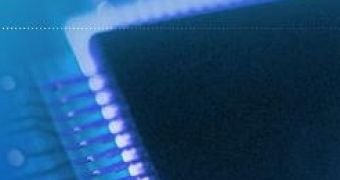Nanochip Technology, a memory and storage research company has received $14 million in research funds to finish its work on some technology prototypes that will revolutionize the storage industry. The prototypes will be hopefully shipped to electronics device makers for extensive evaluations during the next year.
The technology developed by Nanochip is stronger than flash memory, as it can store much more data and will dramatically ax the production costs per memory chip. According to Gordon Knight, the company's CEO, the first batch of chips will be able to store about 100 gigabytes of data. Flash memory, for instance, can store some tens of gigabytes at most, at much higher selling prices. Knight also claims that the improved storage performance is way beyond the possibilities of the actual NAND flash memory.
Flash memory stores the information using special transistors that are controlled by a grid of conducting interconnected wires. The new technology stores the bits of data on a thin-film material with a "network" of microscopic cantilevers with very sharp tips. The bits will have a radius of 15 nanometers in the first technological stage, but it will be reduced to some nanometers as the technology is perfected.
Nanochip will not only replace flash memory, but also the older hard-disk drives. The new technology can store larger amounts of data than flash memory, and at the same time it's cheaper and fast. Knight estimates that the Nanochip technology will also have a longer lifespan than flash memory's 100,000 read/write cycles. The new chips will also be connected to create small storage drives, safer and more economical than the current hard-disk drives (solid-state drives that replace flash with Nanochip's circuits).
There is one challenge left, though, before enjoying cheap and fast memory devices. The company is still trying to create a chip to support thousands of cantilevers. These arrays will have to be mounted on a mobile stage, directed by electrostatic impulses. While classic storage media can access memory bits sequentially, the new memory will have to be able to access thousands of bits at once.
"It's a big challenge, but it's something I believe can be done," Lai says. "And if you solve the problems, then you have a whole new memory technology that's available."

 14 DAY TRIAL //
14 DAY TRIAL //